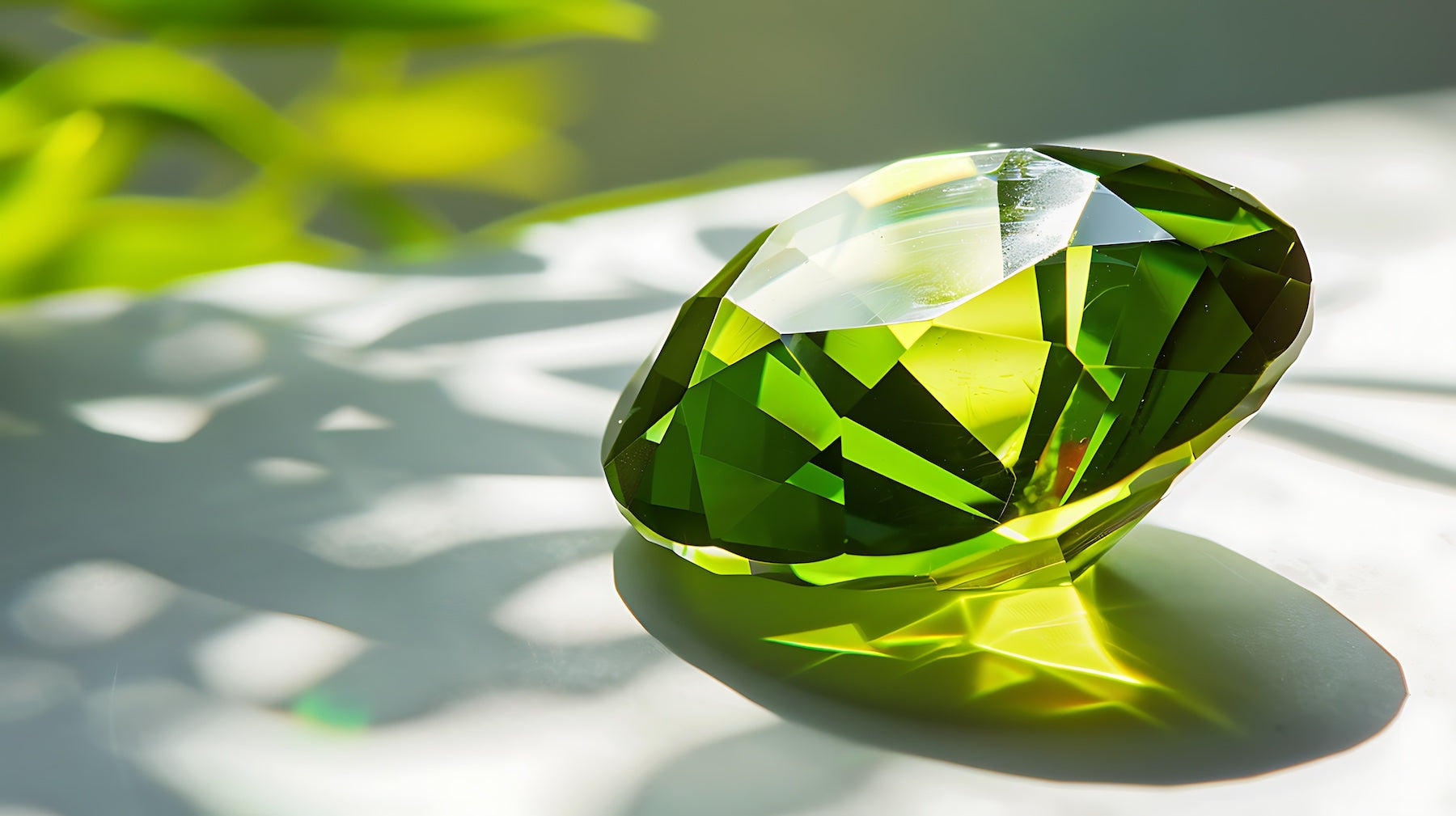
Peridot: The Gem of the Sun

Peridot, the gem-quality form of the mineral olivine, has a rich history that dates back to ancient civilizations. The Egyptians, who referred to it as the "gem of the sun," mined peridot on the island of Zabargad (St. John's Island) in the Red Sea as early as 1500 B.C. These gemstones were highly prized by the pharaohs, and some historians believe that Cleopatra's famous emerald collection might actually have been peridot. Throughout the Middle Ages, peridot continued to be valued, with crusaders bringing the stones back to Europe where they were used to decorate churches and cathedrals. The lore of peridot is also intertwined with numerous legends, including those of the Hawaiian Islands, where it was believed to be the tears of Pele, the volcano goddess.
Peridot Origin and Name
Peridot is found in various locations around the world, most notably in the United States, Egypt, Myanmar (Burma), Pakistan, and China. The gem is typically formed deep within the Earth's mantle and brought to the surface by volcanic activity. Some of the finest peridot comes from the San Carlos Reservation in Arizona and the island of Zabargad in Egypt. The name "peridot" is thought to derive from the Arabic word "faridat," meaning gem, although some sources suggest it could also come from the French word "peritot," meaning unclear, due to the cloudy inclusions often found in the stones.
Peridot Significance and Uses
Peridot has been treasured not only for its beauty but also for its purported metaphysical properties. It is believed to bring protection, prosperity, and emotional balance, making it a popular choice for those seeking harmony and peace. In addition to its use in jewelry, where its vibrant green color is prized, peridot is also considered a powerful healing stone. It is said to alleviate stress, enhance clarity of thought, and promote personal growth. As the birthstone for August, peridot holds a special place in the hearts of those born in that month, symbolizing strength and vitality.
Peridot has a hardness of 6.5 to 7 on the Mohs scale, making it moderately hard but still susceptible to scratches and abrasions if not handled with care. To maintain the beauty and longevity of peridot jewelry, it is essential to store it separately from other gemstones and jewelry pieces to prevent scratching. Cleaning should be done gently using warm, soapy water and a soft brush, avoiding harsh chemicals or ultrasonic cleaners, which can damage the stone. It is also advisable to remove peridot jewelry during physical activities, household chores, and exposure to extreme temperature changes to prevent any potential damage or weakening of the gem.Discover the beauty of this brilliant gemstone exploring our Peridot Jewelry Collection.
